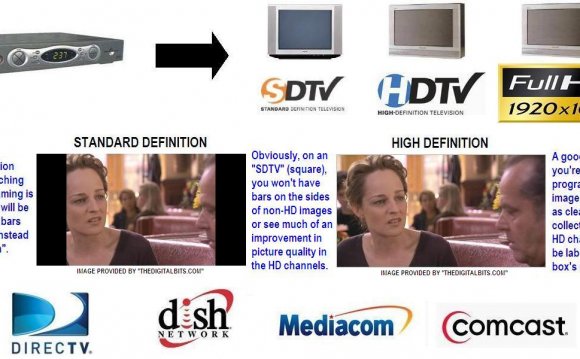
The big switch to digital-only broadcasts is just around the corner, but do you really know the difference between digital and analog? Michael Miller shares the basics of the differences between analog and digital TV.
The Least You Need to Know...
- Current television broadcasts use analog technology, which is prone to fading, snow, and ghosts.
- Digital TV reproduces crystal-clear picture and sound without fading or interference.
- Digital technology also enables TV stations to broadcast multiple channels with different programming.
- Unfortunately, older analog TVs can’t receive digital transmissions.
What’s so special about digital TV? Why is the entire television broadcasting industry moving to digital?
The DTV transition is happening because digital is better television—better looking, better sounding, and with more channels of programming. If you’ve not yet experienced DTV, you’re in for a big surprise!
Before you can appreciate DTV, you have to understand how current analog television works. As you’ll see, it’s an imperfect system—albeit one that’s worked well enough for close to half a century.
Analog television transmits programming in a continuous signal. This signal varies in amplitude, depending on the information contained in the picture. It’s kind of how music was transcribed onto vinyl records; the television signal goes up and down depending on what’s being broadcast.
This analog signal is transmitted on a particular radio frequency, from the television station’s transmitting antenna over the air to the receiving antenna connected to your TV set. Each television station is assigned a particular frequency that corresponds to its channel number. When you tune your TV to a given channel, you’re actually choosing to receive transmissions on that particular frequency.
Unfortunately, this analog signal is far from perfect. It might not always exactly reproduce the original programming. It can easily deteriorate over long distances. And it can also suffer interference from other sources, producing ghost images, static, and “snow.”
The result is that analog transmissions typically produce a lower-quality picture than the original. The picture isn’t quite as sharp, the background is sometimes grainy, and the sound suffers from noise and a reduced frequency response.
But then you know all this—especially if you’ve ever tried to pull in a distant station from a TV attached to an antenna. The farther you are from the station, the worse the picture. And the results are equally poor if you live in a big city with lots of buildings that bounce the signal around. Ghosts and snow are commonplace.
In addition, analog television is inefficient. Each VHF or UHF channel takes up a lot of valuable bandwidth. The more efficient digital technology can fit four or more channels into a single analog channel. And that has many potential benefits.
digitalcollections superherohype popcouncil astro-wisc curseforge kaskus telstra wikimapia nutritiondata rtve tools talgov.com minecraft researchgate infojardin camfrog engawa auone domaindirectory hkex sie inginformatica bonanza opendns







